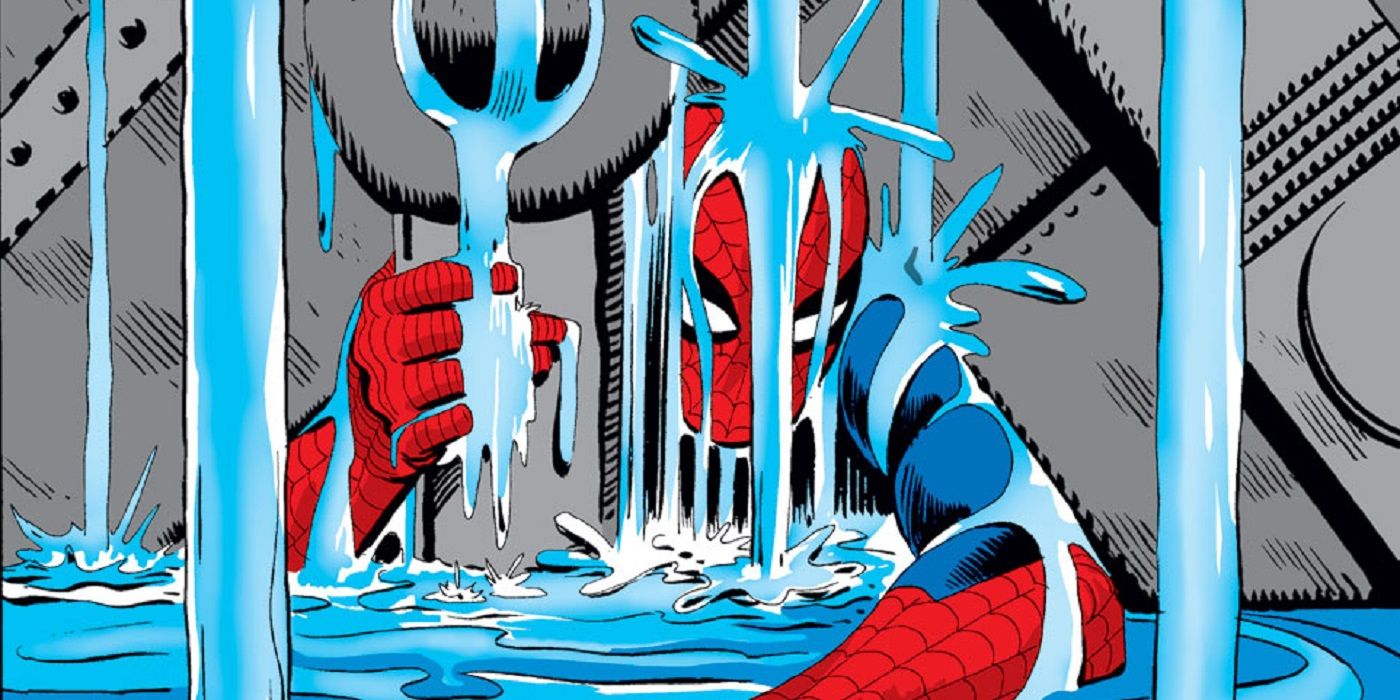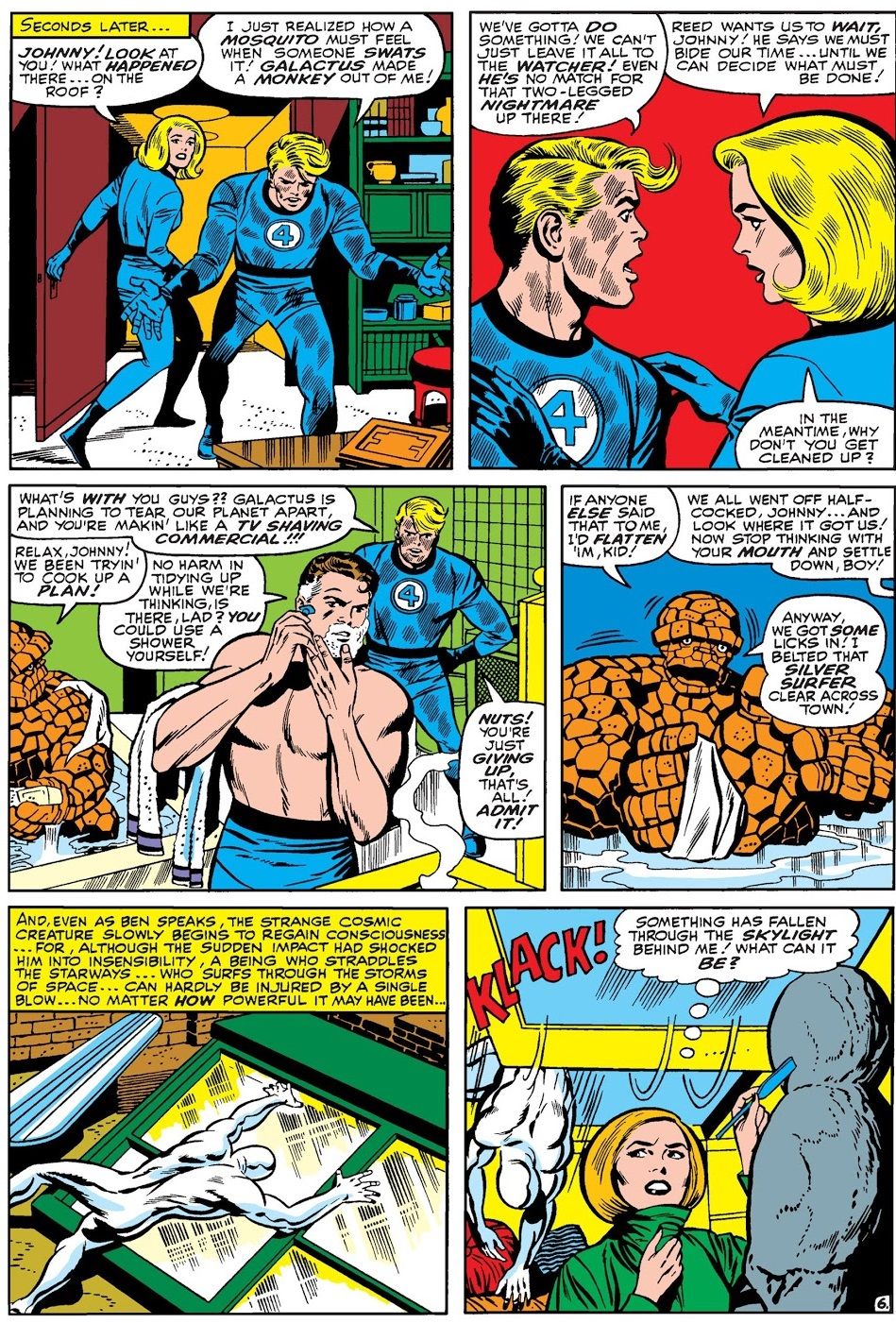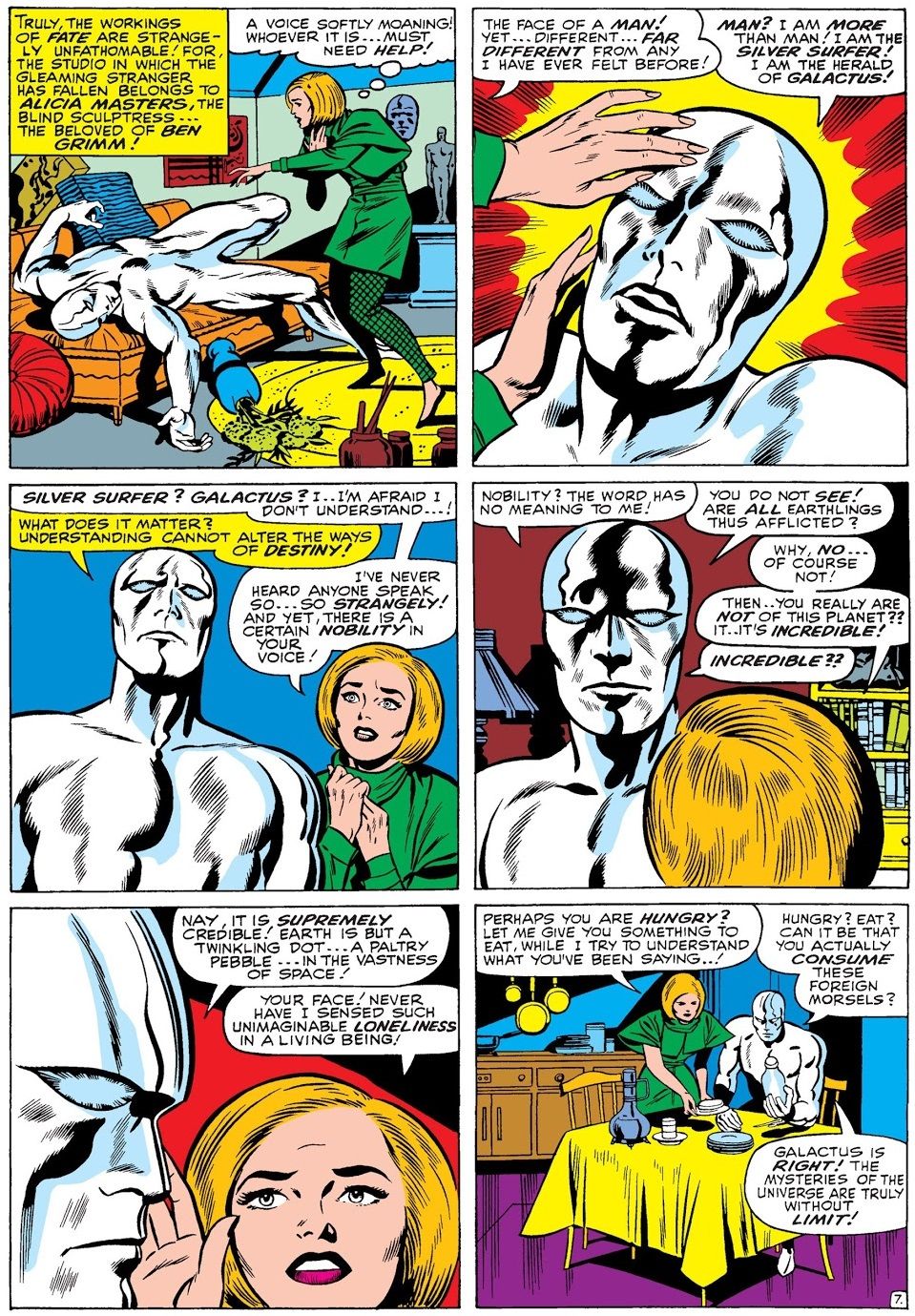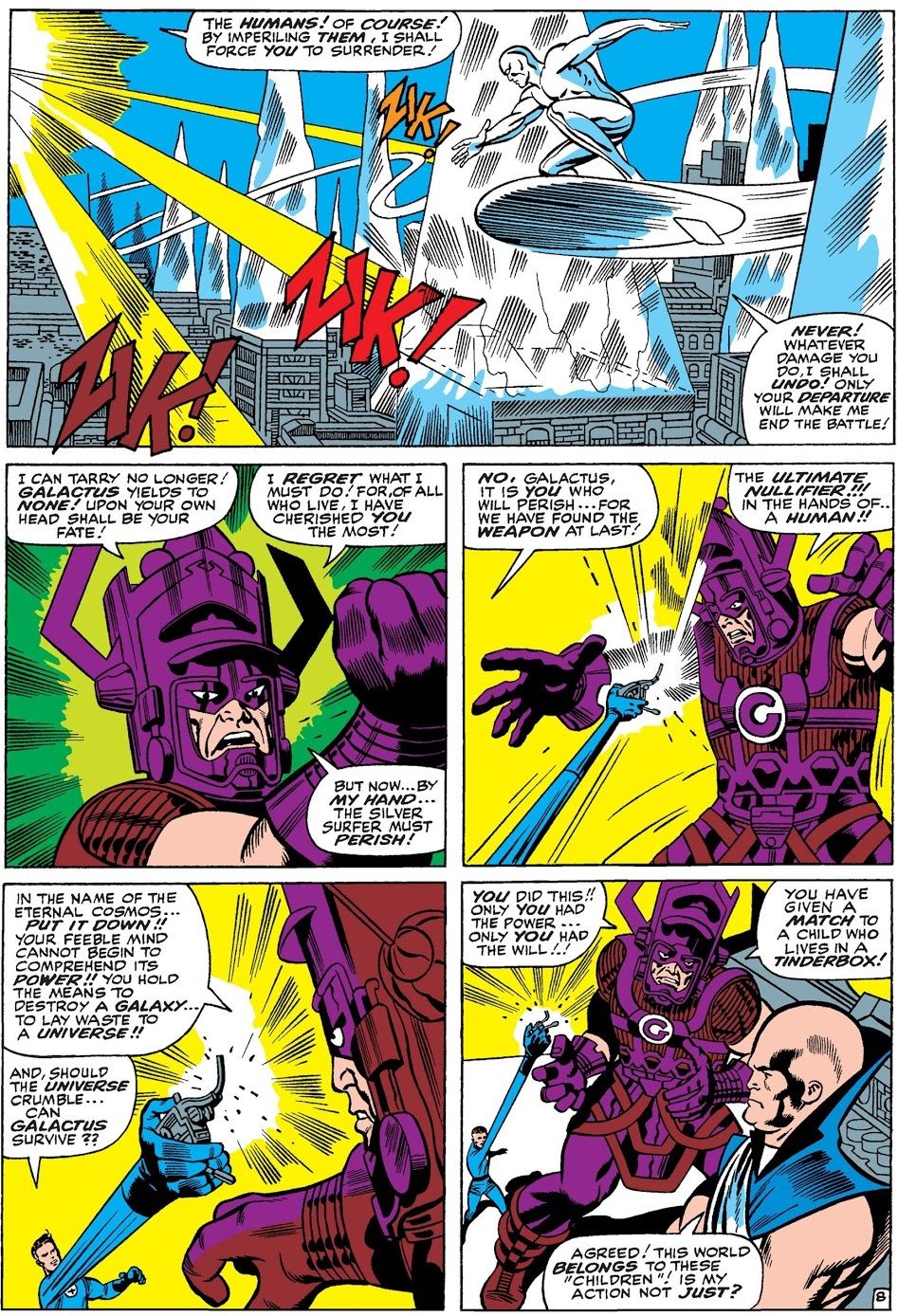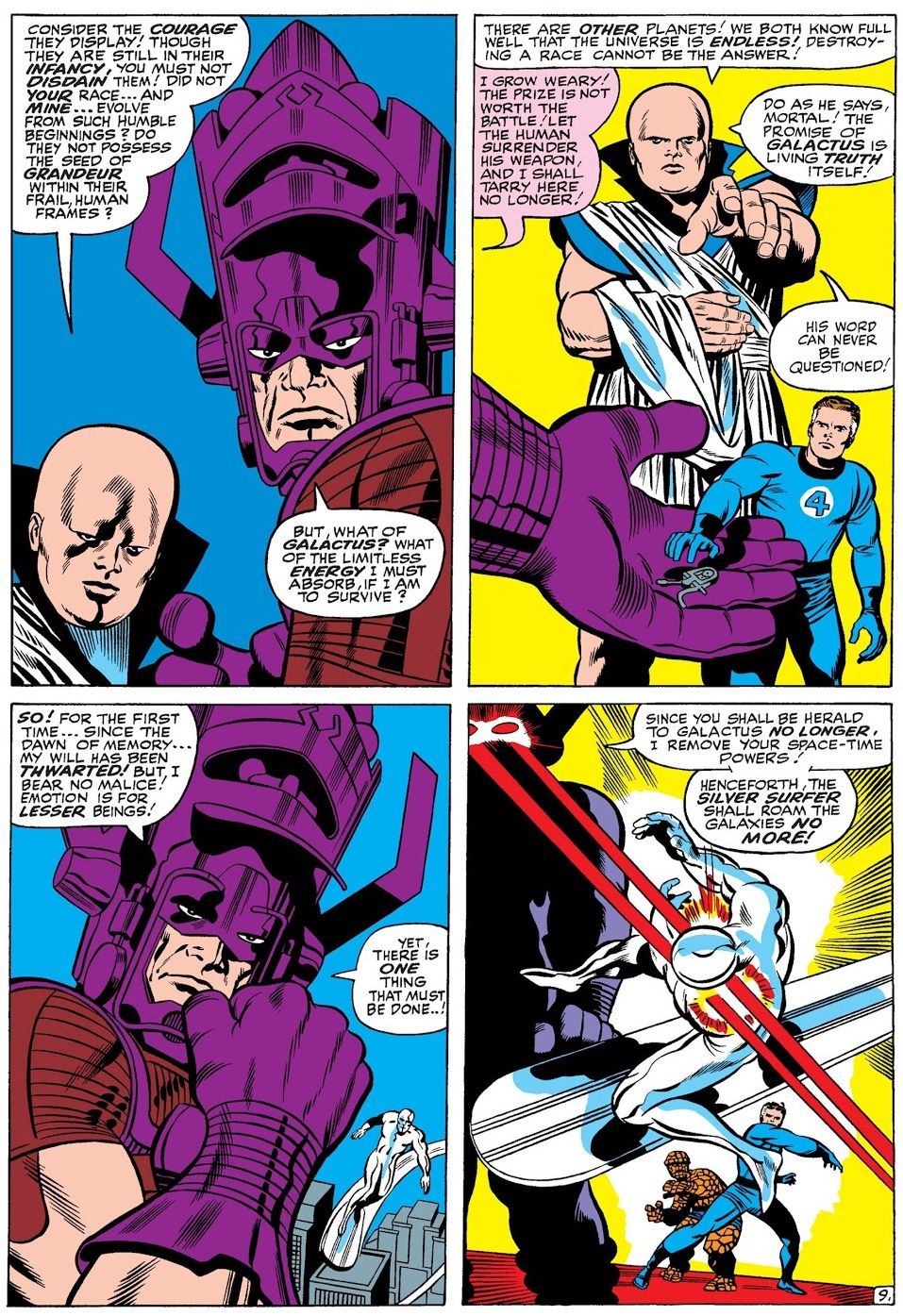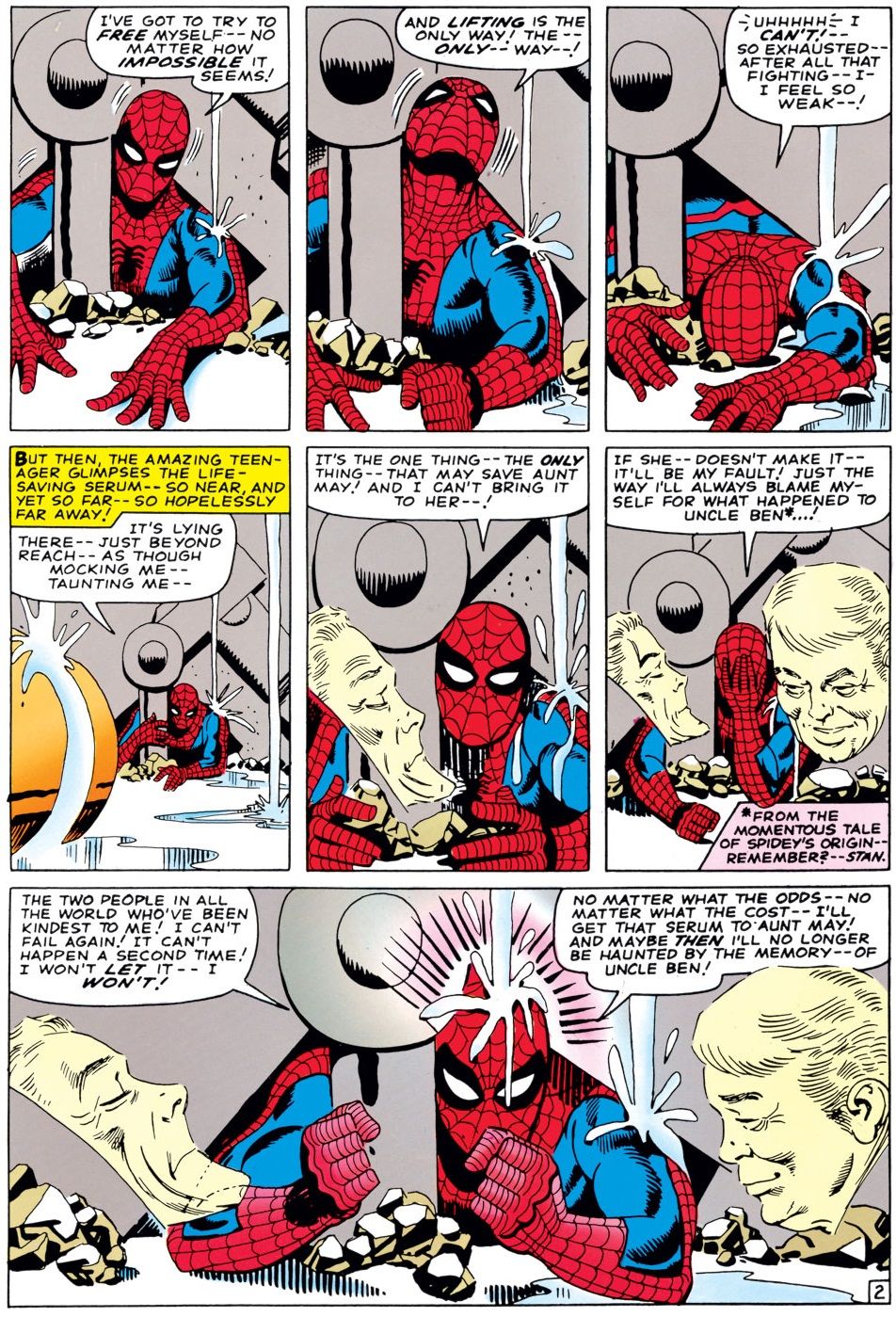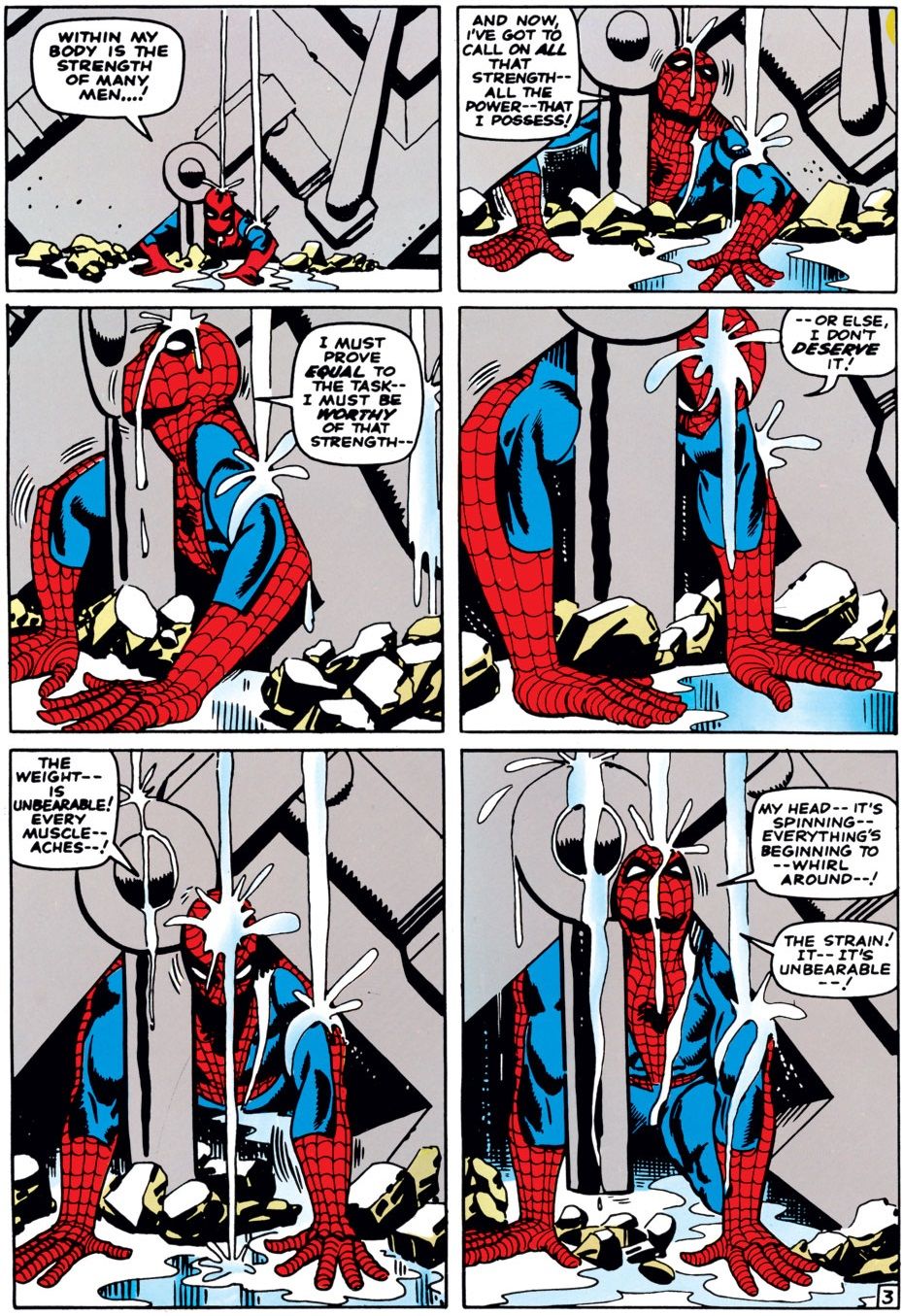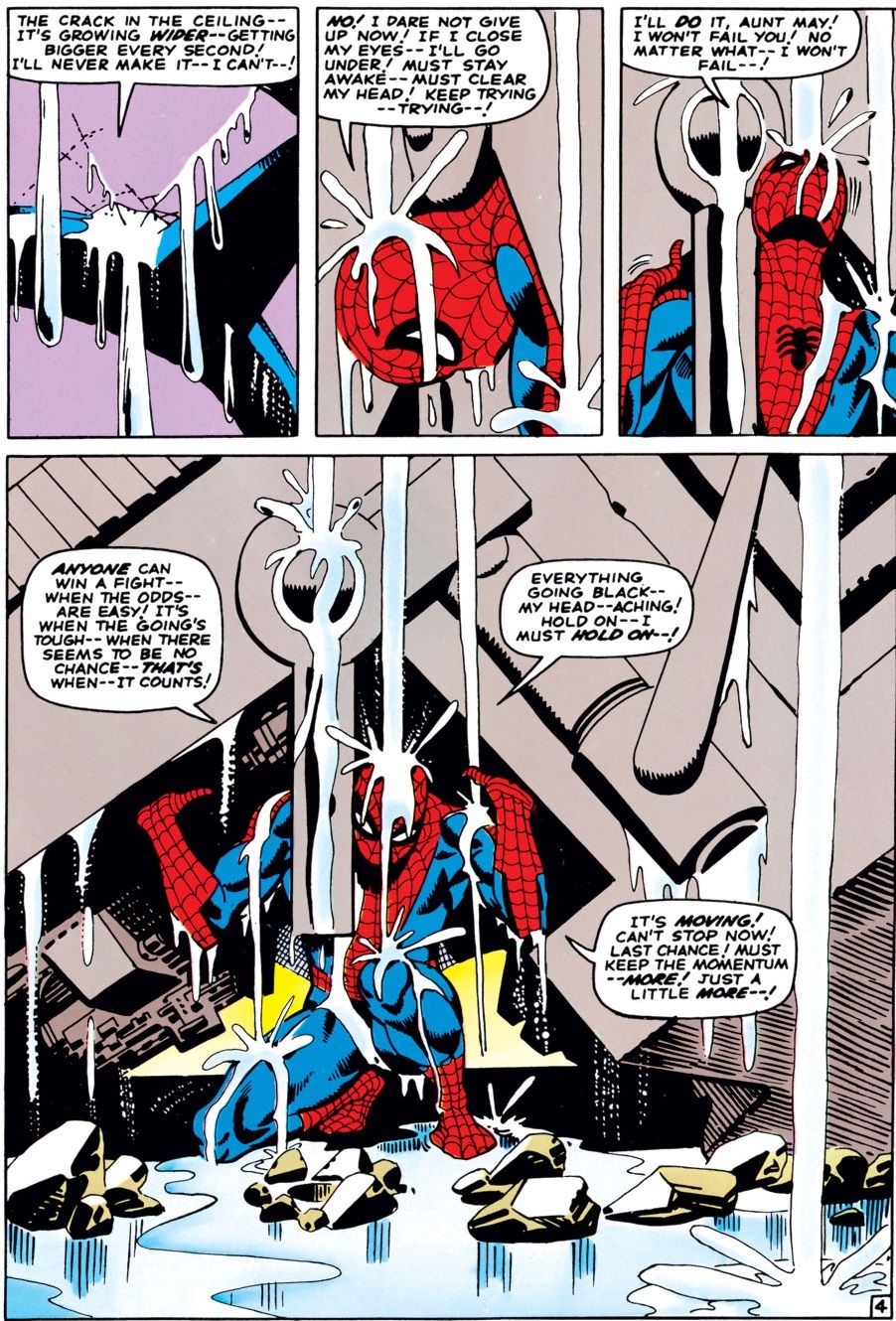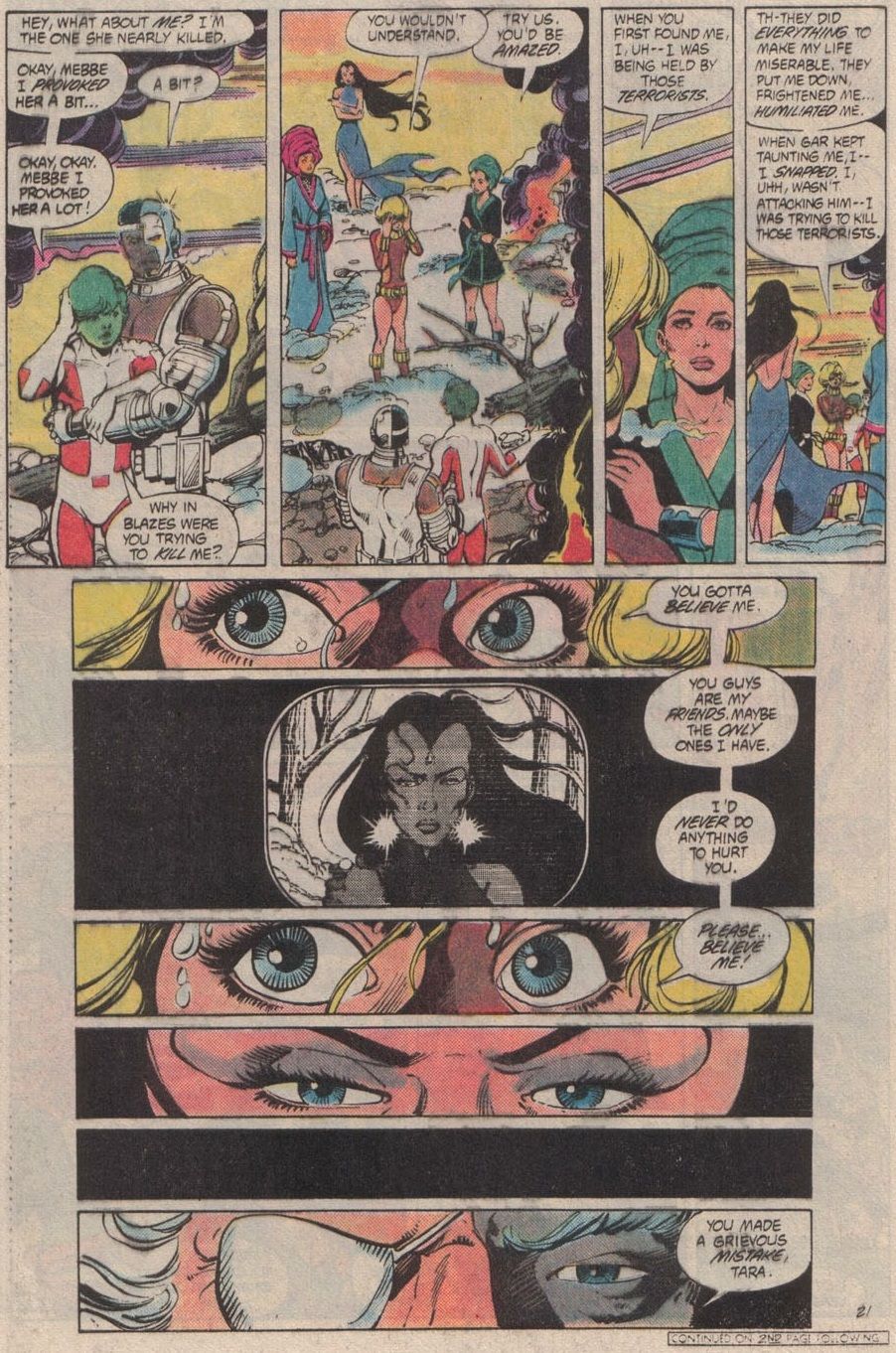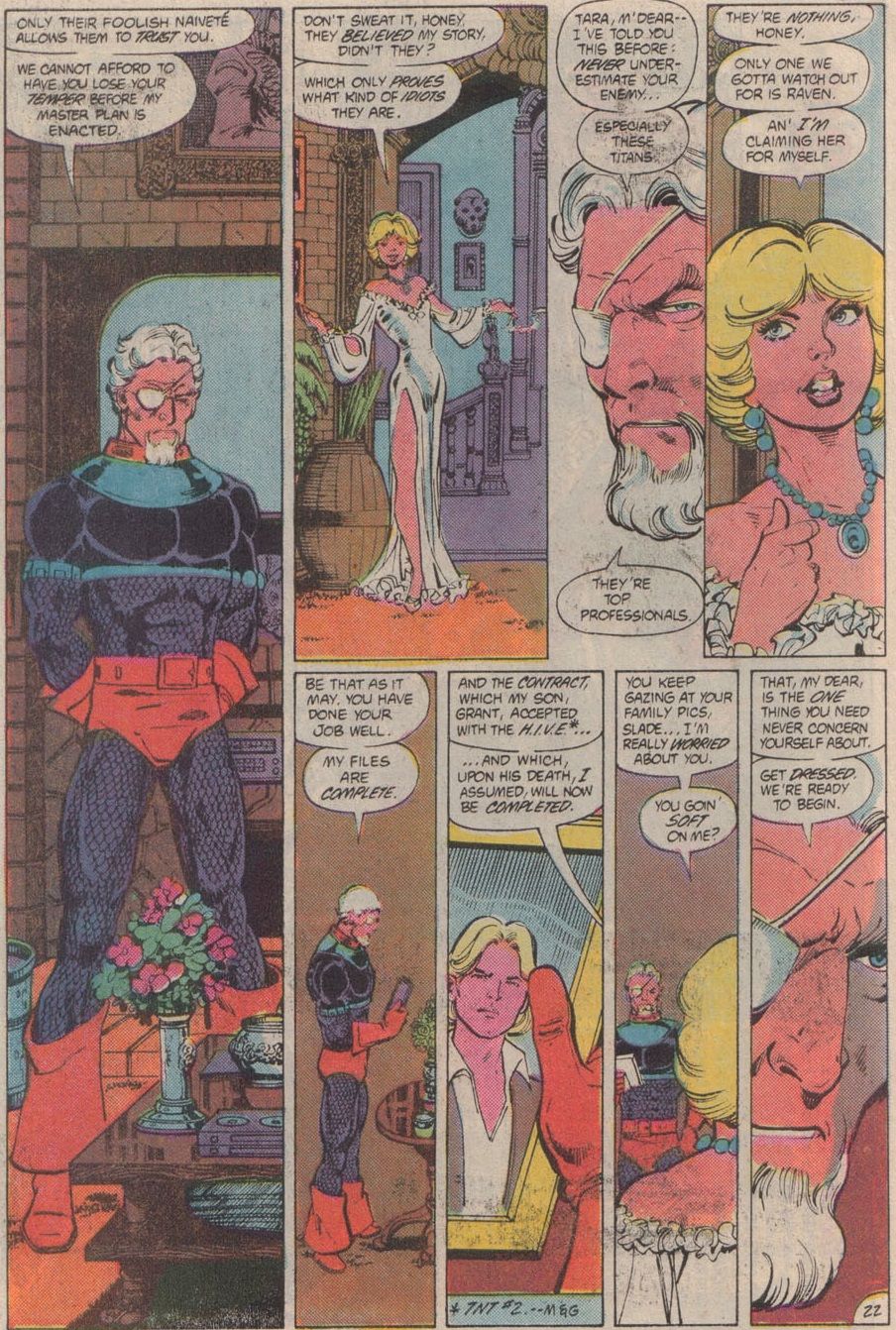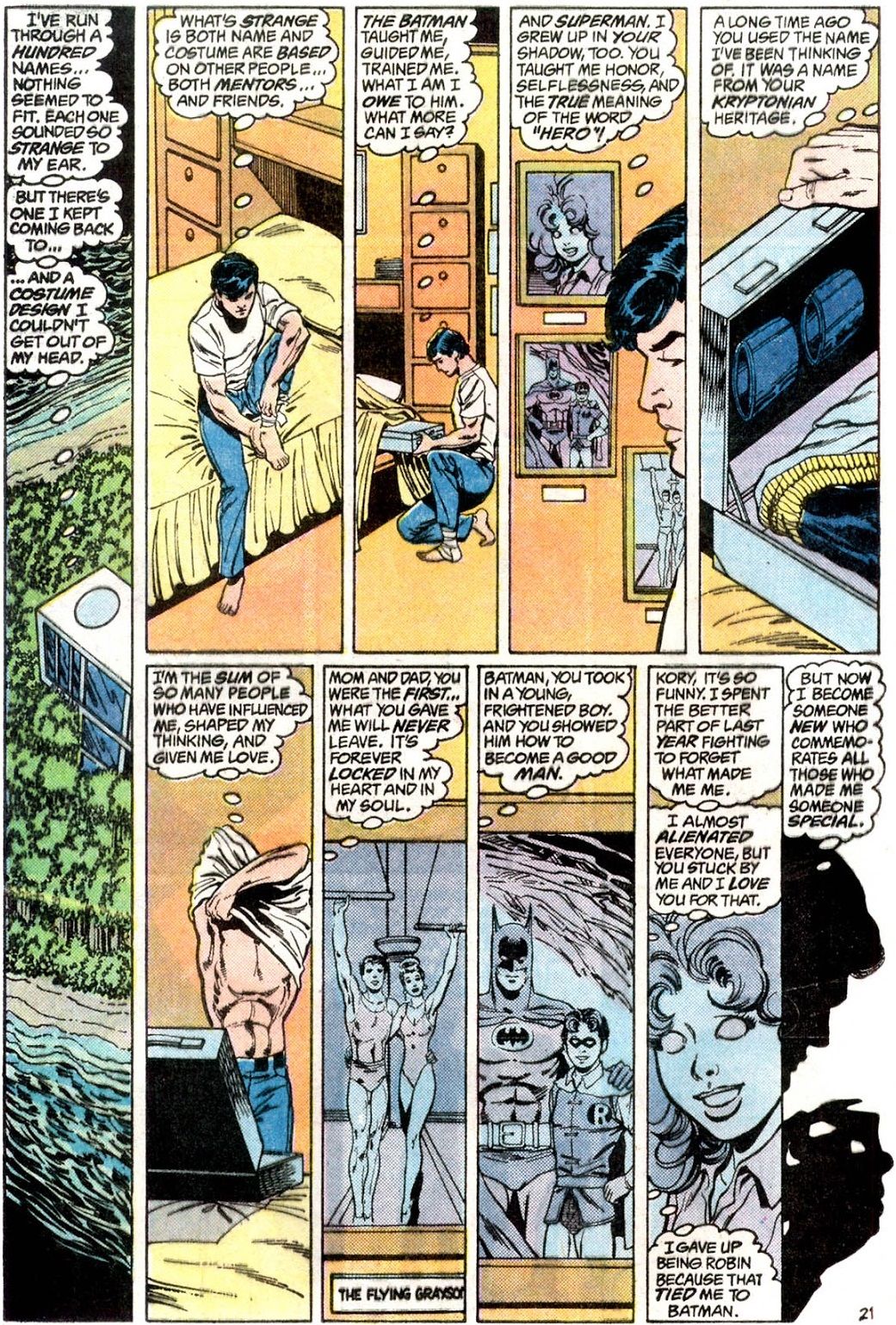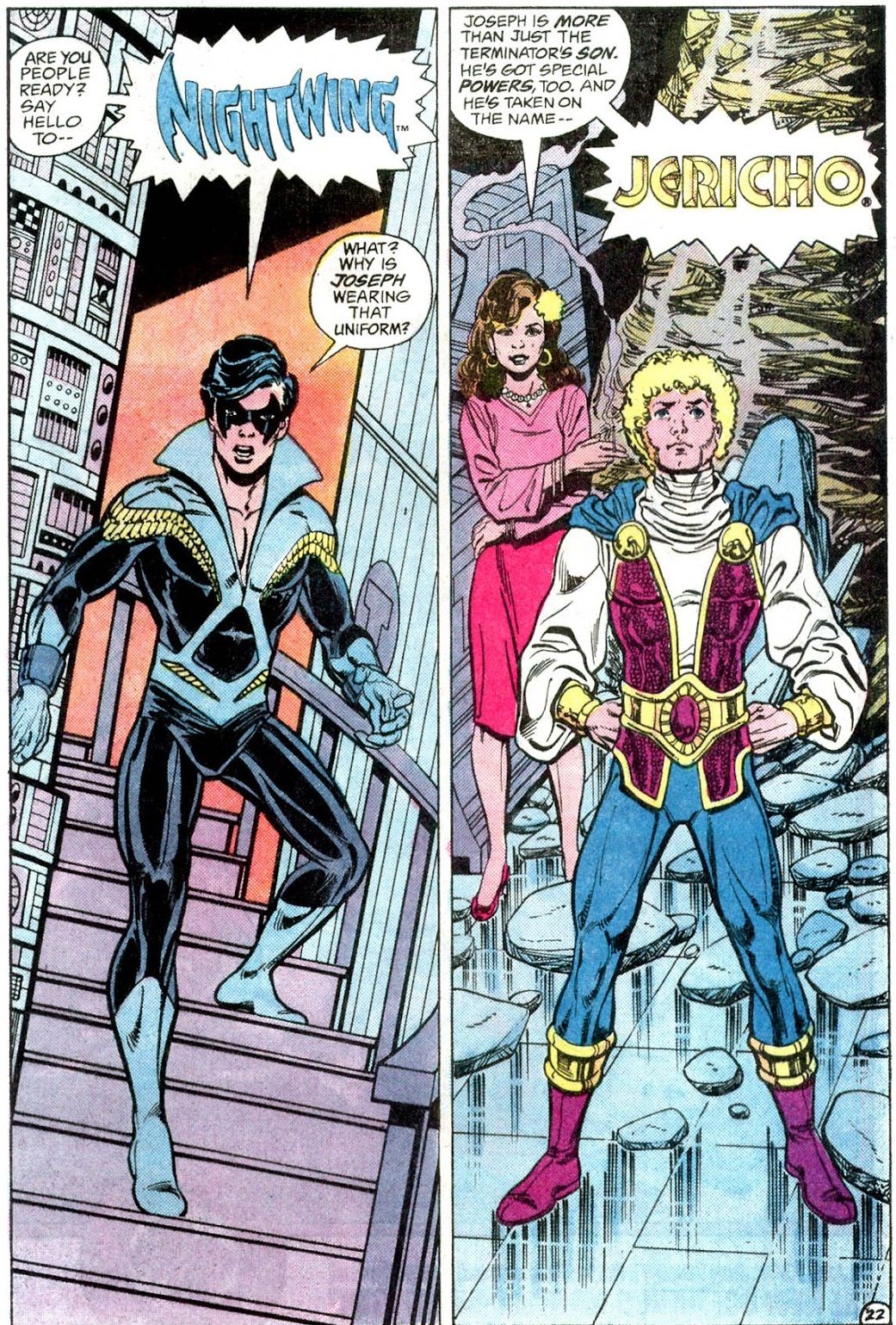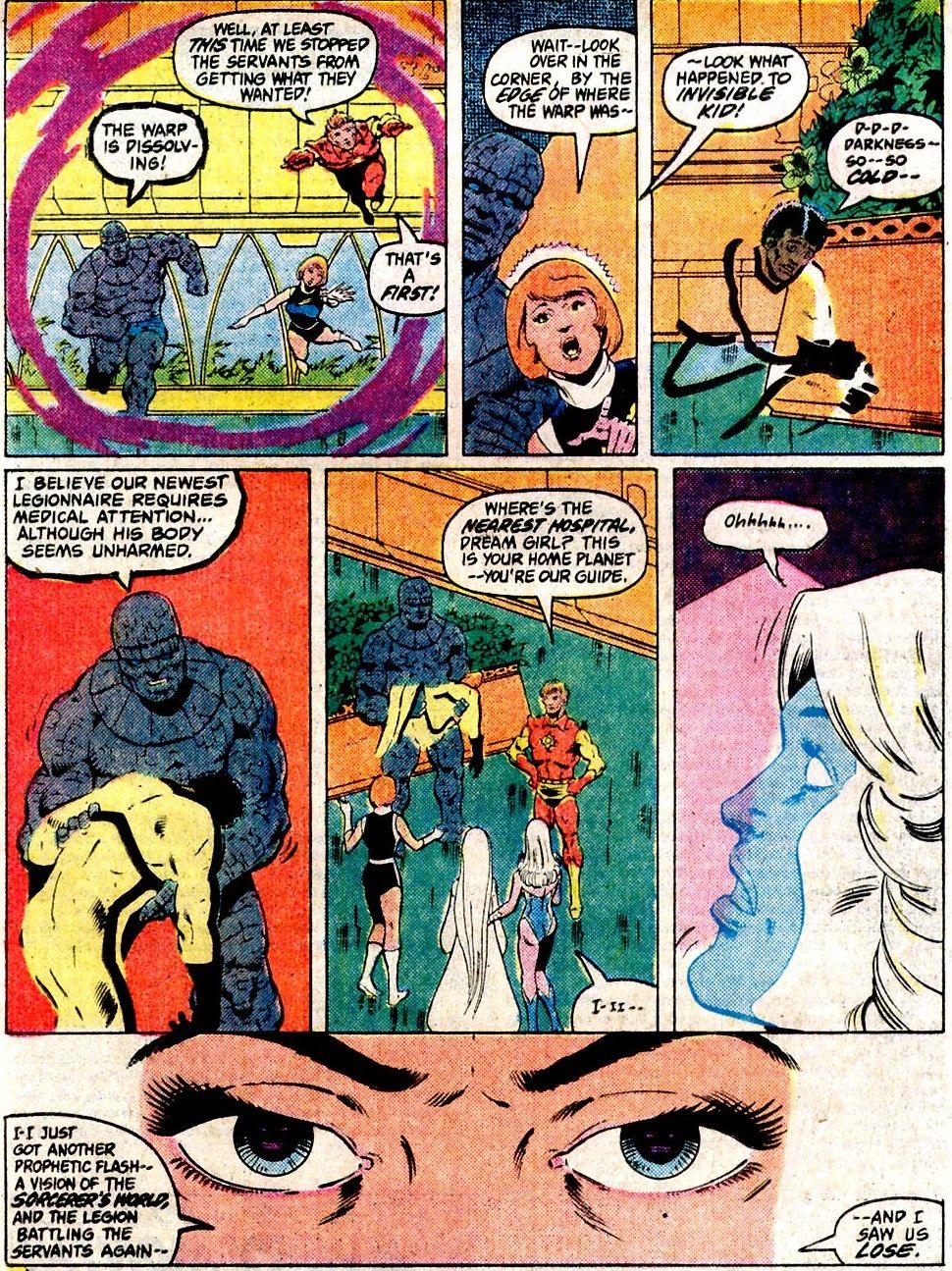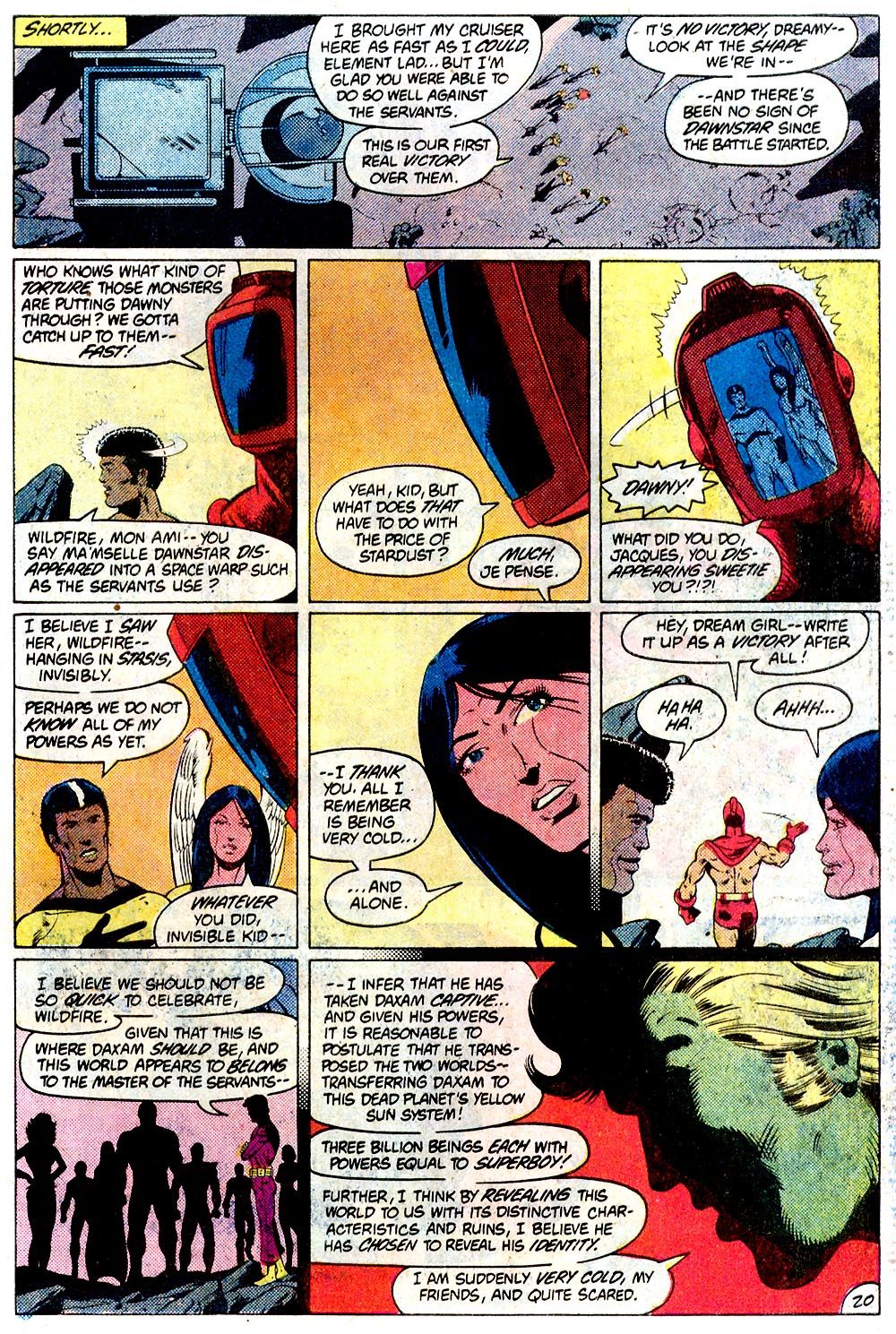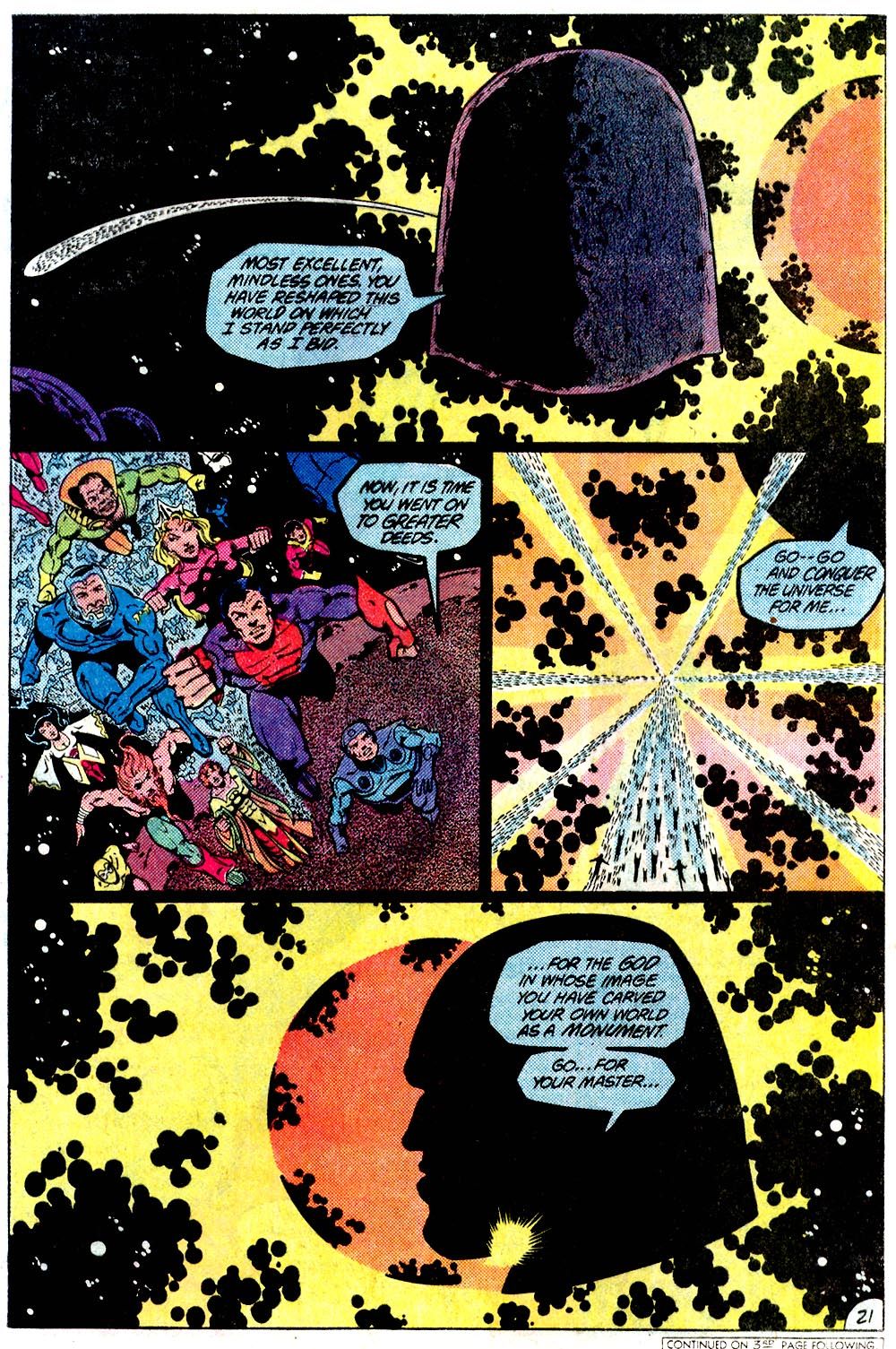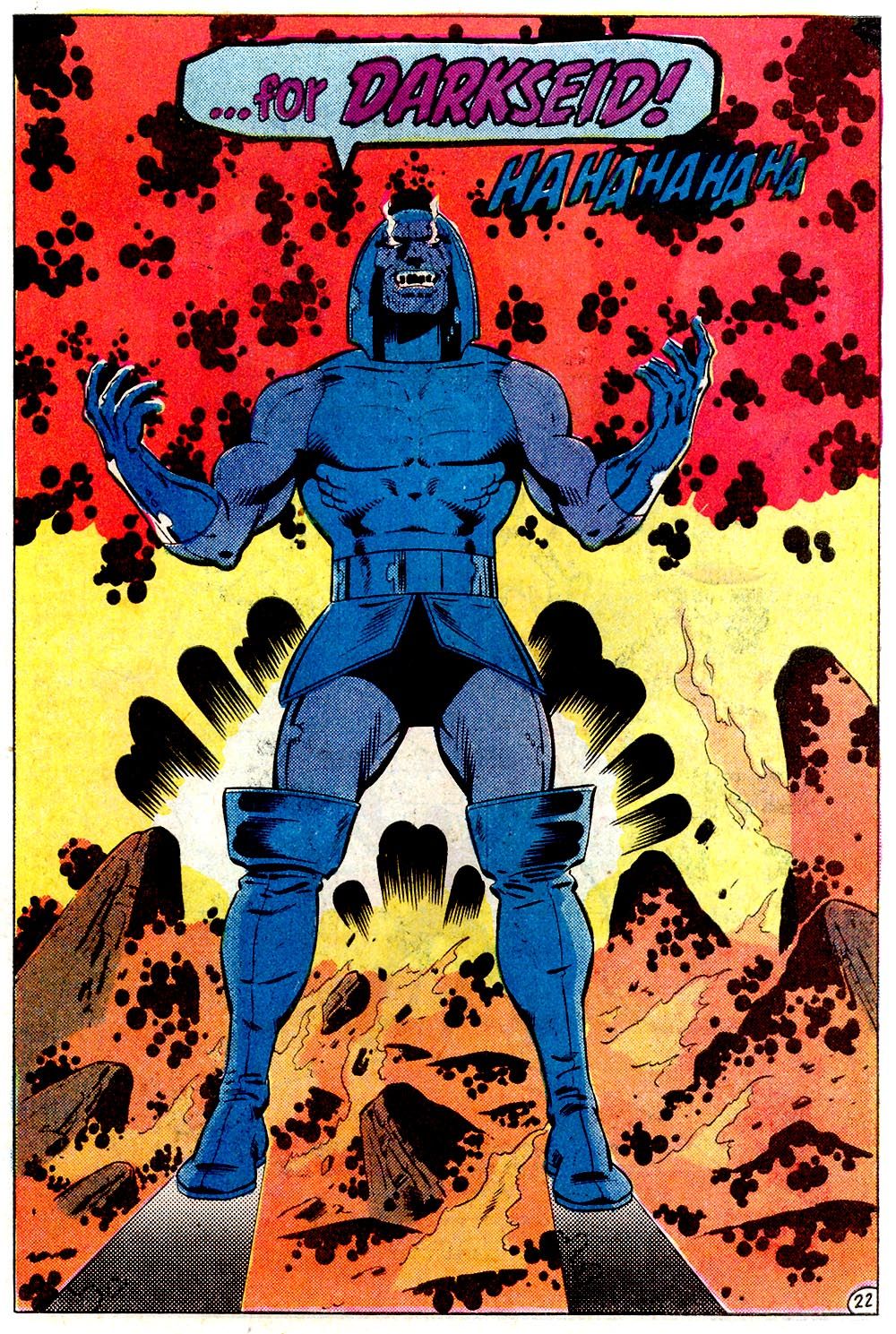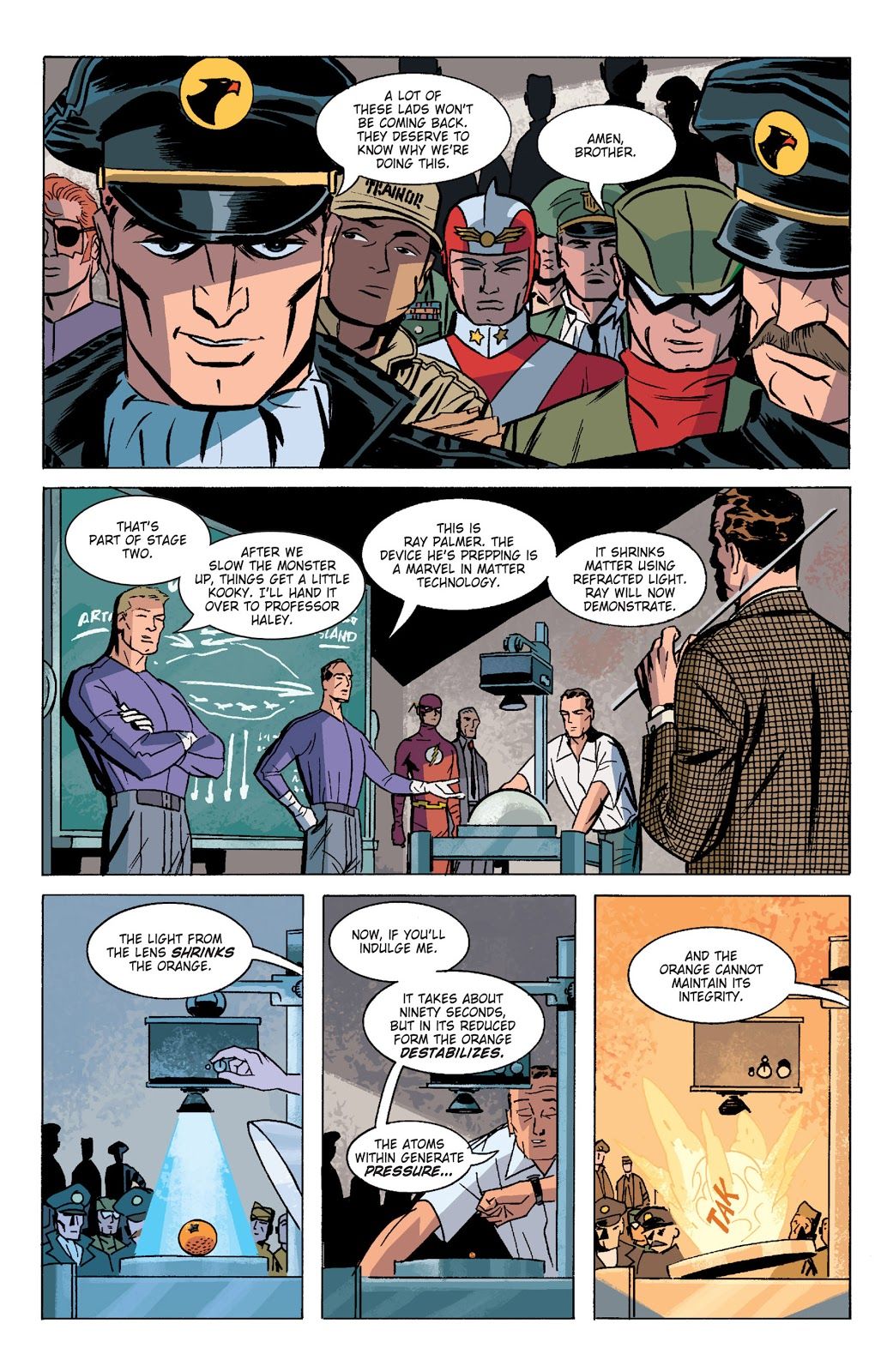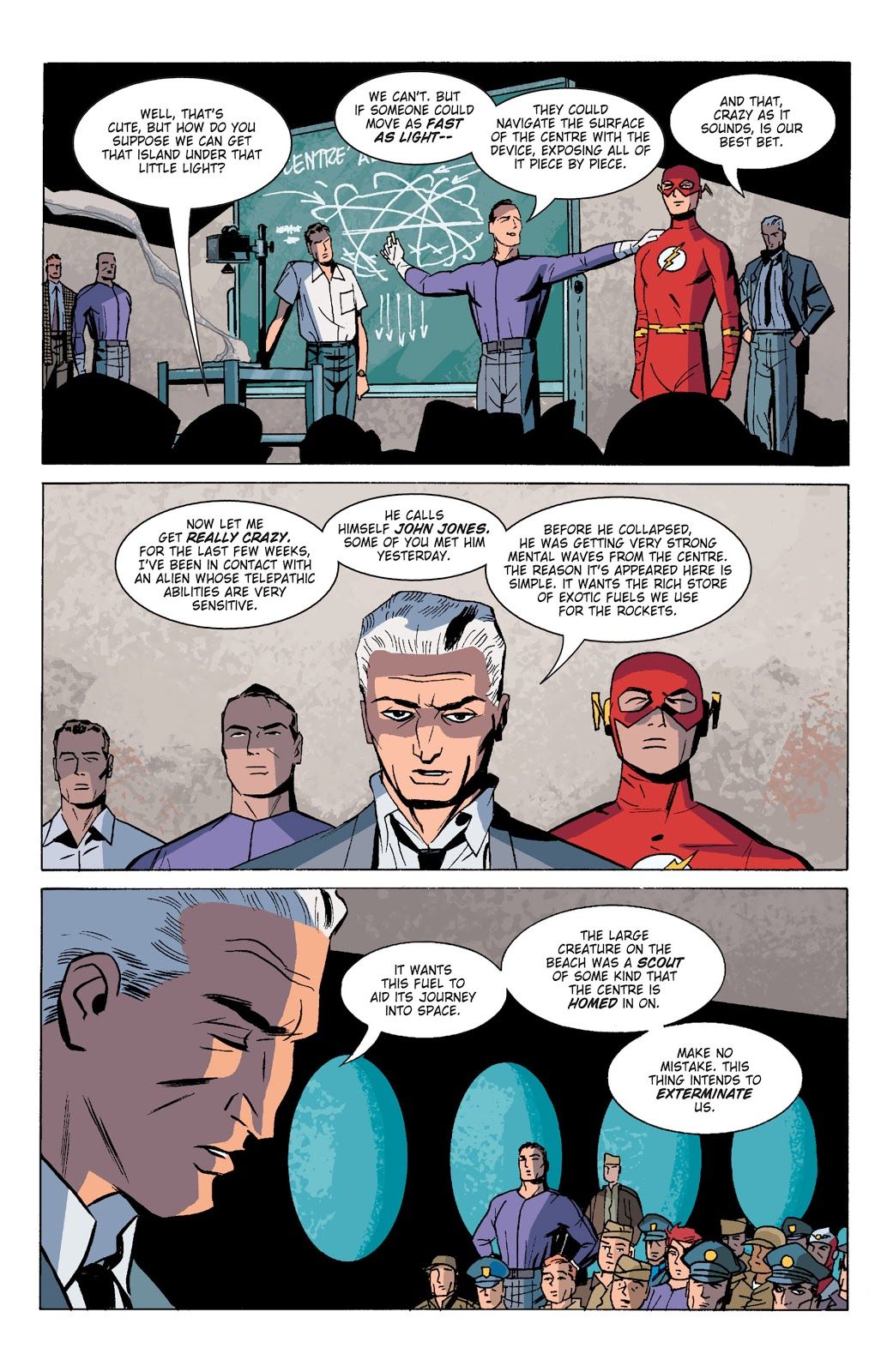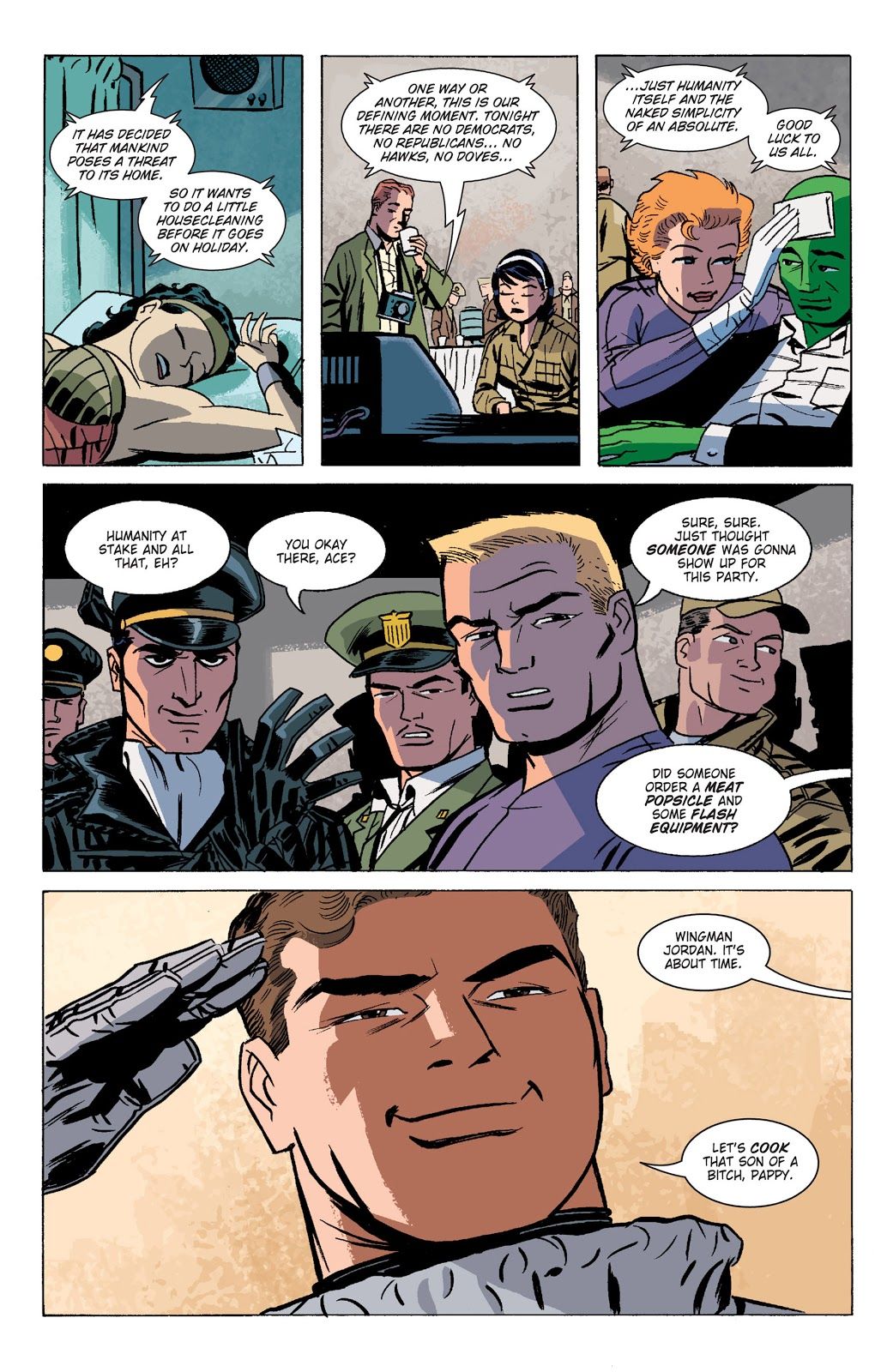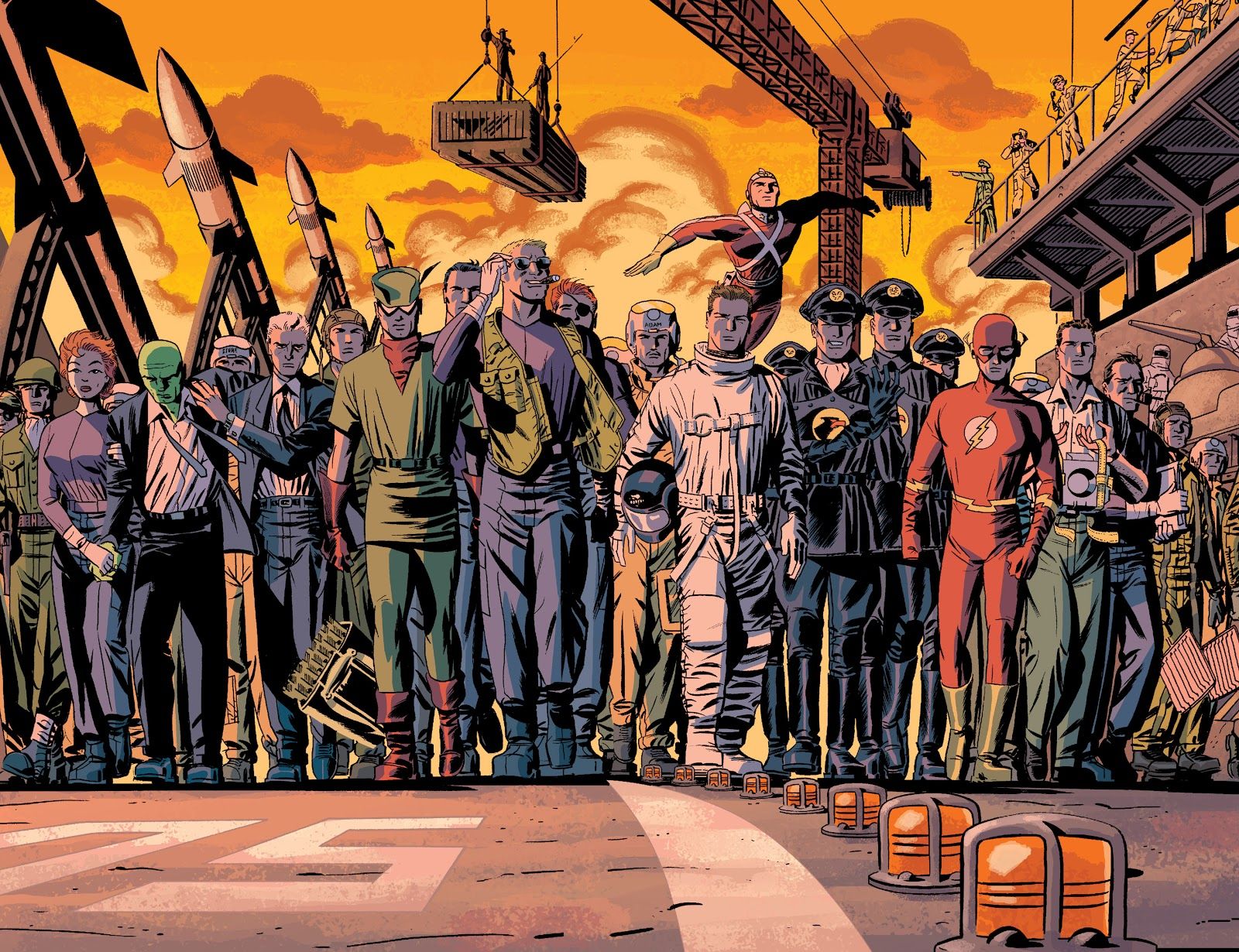You voted, and now, after over 1,000 ballots were cast, here are the results of your votes for your favorite comic book storylines of all-time (this is the third time we've done this countdown. We're on an every four year schedule)! We started with ten storylines a day, and now we're down to five storylines a day (until the last week, which will be three storylines a day). You can click on the Top 100 Comic Book Storylines tag either here or at the end of the post to see the other entries, in case you missed one.
To recap, you all sent in ballots ranking your favorite storylines from #1 (10 points) to #10 (1 point). I added up all of the points and here we are!
20. “The Coming of Galactus” by Stan Lee, Jack Kirby and Joe Sinnott (Fantastic Four Vol. 1 #48-50) – 470 points (1 first place votes)
This storyline works as the epitome of the epic cosmic adventures Stan Lee and Jack Kirby sent the Fantastic Four on often, with wild technology and astonishing stakes (the fate of the entire planet) but at the same time, real human elements, like Reed Richards’ reaction to having to try to save the Earth from doomsday (he doesn’t deal super well with the enormous pressure, grows a beard and even snaps at Sue). However, the most "human" part of the story turned out to not involve a human at all, as the alien being known as the Silver Surfer, the being who was the herald and literally drew the world-eating Galactus to Earth, ended up falling to Earth and learning a valuable lesson in humanity from a familiar face...
And one of the most interesting aspects (and also part of what made the Kirby/Lee FF so great) of the story is how #48 contains the ending of the previous arc and #50 has a story AFTER the Galactus story wraps up (and sets up a story for #51!). At the time, Kirby and Lee were coming up with so many ideas that something as cool as the Galactus trilogy, where basically “God” showed up to destroy the Earth, was not even the SOLE story for the three parts of the trilogy!!!
The 50th issue has some stretches of the imagination, but it also has two extremely iconic moments – Reed Richards threatening Galactus with the Ultimate Nullifier…
and Galactus stripping his former herald, the Silver Surfer, of his abilities to roam the galaxy, as punishment for helping to fight for the people of Earth…
And note that these moments were handled as just one of many panels!!
You could argue that this comic had it all – great story, great art, cosmic problems, earthly problems, action – it was the complete package, and it still stands out today, fifty-plus years later!
19. "If This Be My Destiny" by Steve Ditko and Stan Lee (Amazing Spider-Man #31-33) – 475 points (10 first place votes)
This storyline is particularly interesting in the fact that, right smack in the midst of it all, Gwen Stacy and Harry Osborn are introduced!
The story is set as Peter Parker is just beginning college – he hopes to be able to concentrate on his studies, but he soon learns that his Aunt May is deathly ill, likely due to a blood transfusion Peter gave her a number of issues ago (his blood being radioactive and all).
So Peter finds out a way of curing her, but he needs a special serum. Well, the problem is that a criminal known as the Master Planner ALSO wants the serum.
After a tussle, Spider-Man succeeds in securing the serum, but not before being trapped under a pile of heavy machinery in the Master Planner’s underwater base – a base that has cracked, sending water from the river above ever so slowly into the room where Spider-Man is trapped. And if that weren’t enough, the Master Planner’s guards are outside the room should Spider-Man somehow escape!
How Spider-Man gets out of this mess is the thing of comic book legend, and that’s just who the creative team was – Steve Ditko delivers what was basically his swan song on the title (he stuck around for a few more months, but clearly, this was the high water mark of his run – everything else was downhill from here until he left at #39, likely because he knew he was on the way out), and he goes out in style, with some of the most brilliantly designed pages of the Silver Age.
Stan Lee delivers the pathos along with Ditko’s brilliant action sequences. What's sometimes lost about that sequence is that that was not the extent of what Spider-Man had to do to get to Aunt May. He still had a whole pile of armed guards to defeat, all while injured and having just lifted a whole ton of stuff off of him, so he was exhausted beyond belief, but he just essentially turned his mind off and just starting swinging until everyone was out cold. It was yet another stunning sequence by Ditko right after the previous (more famous) stunning sequence. Ditko was really riding on all cylinders at this point in time.
Peter’s sense of responsibility never had such tangible evidence as this storyline – what he will do to save his Aunt is amazing, or maybe even spectacular!
18. "The Judas Contract " by Marv Wolfman, George Perez, Dick Giordano and Mike DeCarlo (Tales of the New Teen Titans #42-44, Tales of the New Teen Titans Annual #3) – 488 points (4 first place votes)
The Judas Contract was the pay-off on an amazing slow build. In the very first issue of the New Teen Titans, the group faced off against a mercenary named the Ravager. He died fighting the Titans. His father was introduced the next issue, picking up his son’s unfulfilled contract. Deathstroke the Terminator would soon become one of the most acclaimed villains of the 1980s.
Thirty-four issues into the series, we learn that a brand-new member of the Titans, Terra, who had joined a few issues earlier, was secretly working for Deathstroke.
From that point on, the slow burn came to a simmer as readers realized that Terra had to eventually make her move and this storyline was it.
The first issue was an awesome “Day in the Life” issue that doubled as showing us how Terra was monitoring the group and looking for their areas of weakness. She almost breaks cover towards the end during a training session where she lets out a little of the real hate that she feels for the Titans, which leads to a really cool transition…
The Deathstroke/Terra relationship was one of the great "oh man, this is disturbing" comic book relationships of the 1980s. Of course, it was SUPPOSED to be icky, so it works, but boy does it work well in making you squirm reading it.
Anyhow, Deathstroke makes his move the next issue and takes out most of the team, only Dick Grayson (he had recently quit being Robin) avoided capture.
Dick meets up with Deathstroke’s ex-wife and Deathstroke's other son, who is still alive. Deathstroke's wife gives Dick the lowdown on how Deathstroke came to be. It’s an amazingly well-told origin and the ending of it is truly outstanding, as we see the extent of Deathstroke's bizarre sense of "honor." It lost him his wife, it indirectly lost him his oldest son (who decided to follow in his father's ways) and it cost him the voice of his youngest son (who had his throat sliced when he was taken hostage by one of Deathstroke's enemies and Deathstroke was so confident that he could take out the rival before he could cut his son that he took the shot and was partially wrong, leading to his son's throat being cut enough to sever his vocal cords forever. Deathstroke's wife then severed their relationship by shooting Deathstroke in the head for letting his arrogance (and keeping his mercenary work a secret from his family) main their son. He survived, but lost an eye, leading to his famous eye-patch look.
Anyhow, Dick of course debuts his new identity in this storyline, with the well-thought reasoning behind the name Nightwing (as a split between his Batman influence and his Superman influence).
Dick and Deathstroke’s family goes to rescue the Titans and it leads to a dramatic conclusion with one Titan not making it out alive (luckily, it is the Titan who betrayed everybody, so it’s all good).
Go to the next page for #17-16!
17. "The Great Darkness Saga" by Paul Levitz, Keith Giffen and Larry Mahlstedt (Legion of Super-Heroes #290-294) – 490 points (11 first place votes)
Probably the most notable aspect of the Great Darkness Saga is just how well Paul Levitz and Keith Giffen developed the drama of the storyline. It was very much a slow burn as things slowly got progressively worse until, well, all hell broke loose at the end of the story.
Larry Mahlstedt was Giffen’s inker at the time, and the duo produced some strong, dynamic and characterization-filled artwork.
After some small references in the issues before, the storyline began proper in Legion of Super-Heroes #290, as some mysterious powerful “dark” creatures keep popping up around the world capturing items of power, with the Legion trying (to no avail) to stop them at each opportunity.
In the next issue, the situation continues to deteriorate, and the mystery of WHO these “dark warriors” are becomes a bigger issue, as it APPEARS as though the dark creatures are actually powerful beings from the past – beings that have been long dead for years (centuries in some cases).
The slow burn is perhaps highlighted by Dream Girl having a dream of the future and, well, the dream not going so well for the Legion…
The Legion keep finding setbacks in their fight against the dark ones until finally having a minor victory in #293, but even in victory, things look pretty damn bleak, as the big bad guy has turned the entire populace of Daxam into essentially an army of Supermen…and that’s before they reveal that Darkseid is the big bad guy!!!
The impact of that reveal was a lot bigger back when Darkseid was not such a popular villain for people to use (how freaky is seeing the brainwashed super-powered Daxamites use their new powers to literally sculpt their planet so that it looks like a giant vision of Darkseid’s head?!!? Holy crap!).
And that, of course, leads into a dramatic last issue that has all the drama and action you would expect from the previous issues, as Darkseid eventually takes the fight directly to the Legion. Of course, this being a superhero story, there has to be a final twist to save the heroes (hint – it involves a mysterious looking boy who showed up at the same time all this other stuff was going down). But here I think Levitz and Giffen played fair and the twist was realistic. What a wonderfully told story.
16. "The New Frontier" by Darwyn Cooke (DC: The New Frontier #1-6) – 532 points (8 first place votes)
New Frontier was Darwyn Cooke’s love letter to the Silver Age of the DC Universe.
The set-up of the series was to present the formation of the Silver Age in the context of the actual late 1950s/early 1960s.
So Cooke highlights the days of McCarthyism, and applies that to the world of superheroes, painting a bleak picture for heroes.
Probably the two main characters in New Frontier are J’onn J’onnz and Hal Jordan, as Cooke shows each of their journeys to superherodom from start to finish.
The rest of the series is populated with essentially a who’s who of DC characters, all drawn wonderfully by Cooke.
The book is more or less a collection of set pieces (a Losers story here, a Superman story there, a Hal Jordan here, a Flash story there) all leading up to the point where an alien invasion forces all the heroes to band together. The key is that at this point in the DC Universe, Superman is such a major force that he has been relied on to do pretty much everything. So when the big bad guy knocks Superman out, all of the “little” guys, the DC Silver Age characters Cooke has so much affection for (and rightfully so) have to step up and save the day for themselves. This leads to one of the most epic slow walks in comic book history…
Cooke had been working in animation for years and while he had done comic book work before this series, this was his most significant introduction to the comic book world and wow, what an intro! Thank goodness that the late, great Cooke decided to give comic books another chance, as he changed the medium so much for the better that it was a joy to have him around for the last decade of his life.

